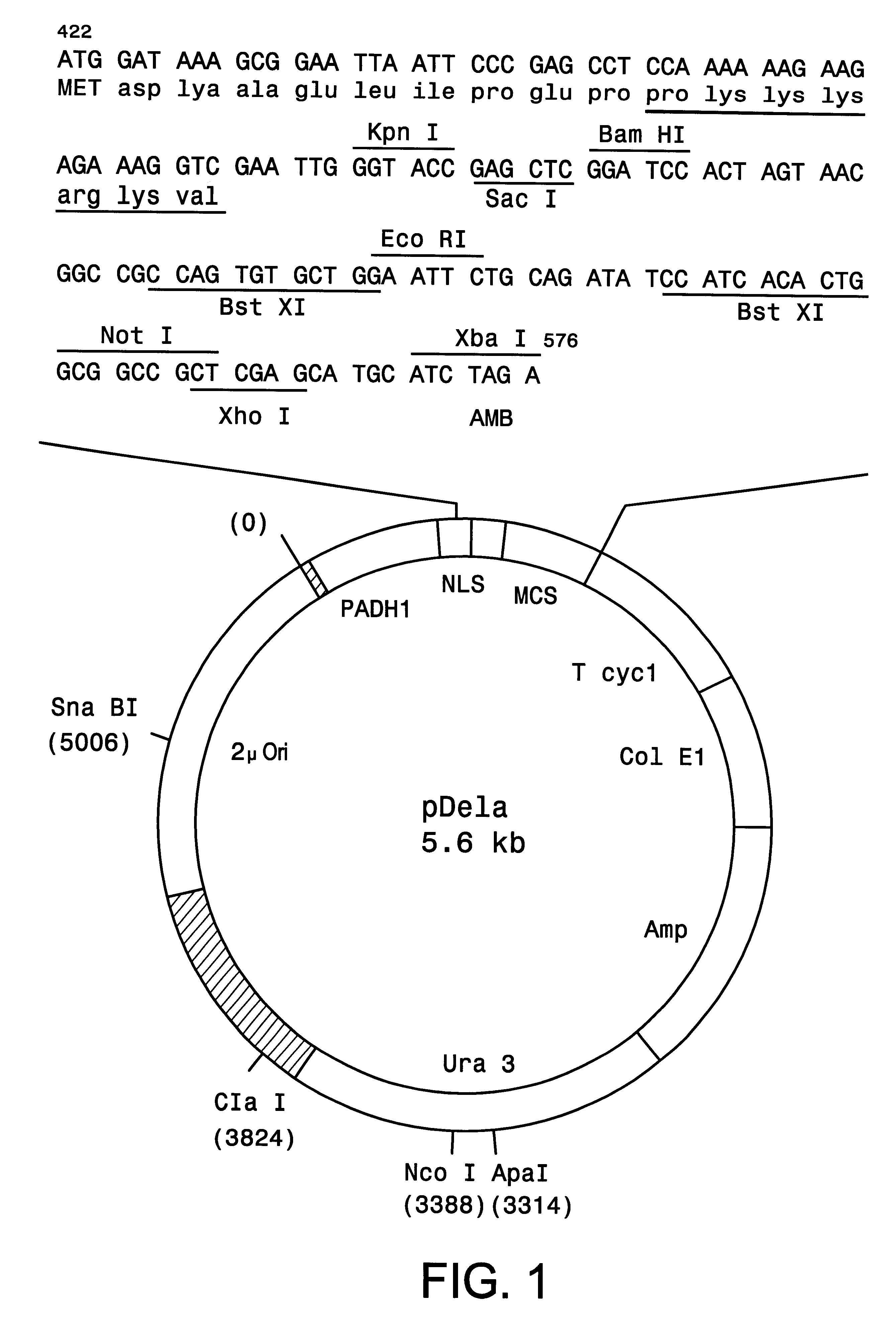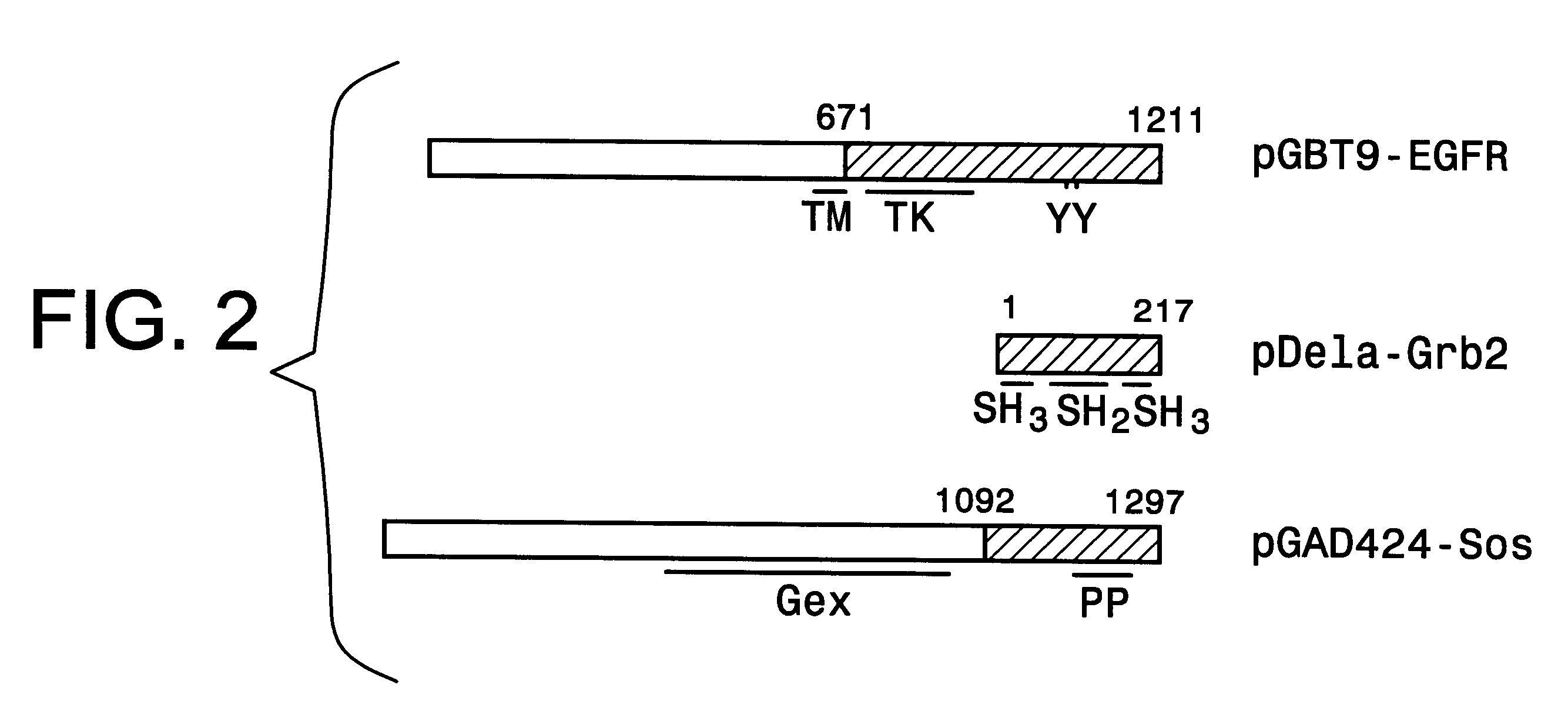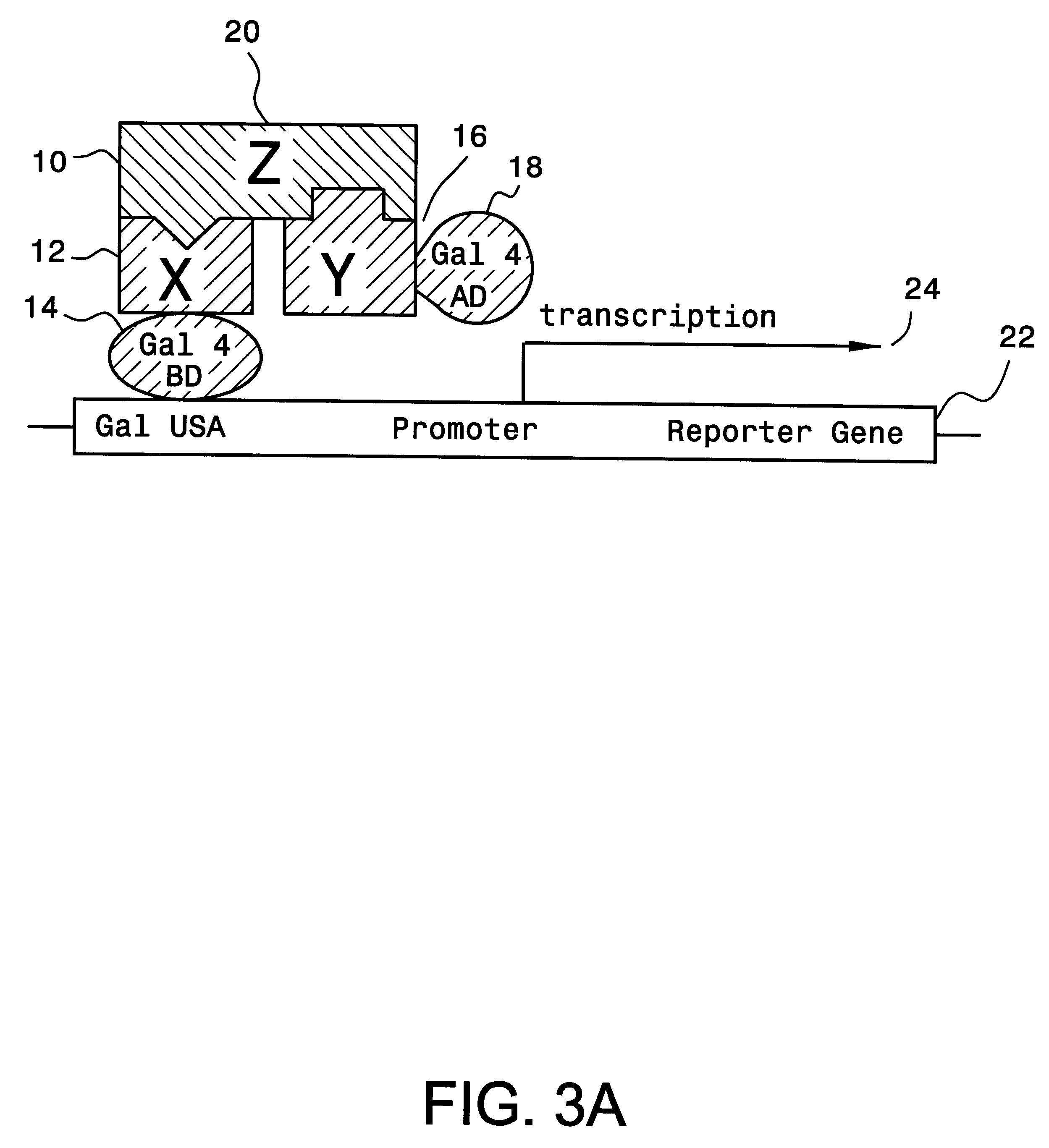Method and kit for detection of multiple protein interactions
a technology of protein interaction and detection method, which is applied in the field of multiple protein interaction detection method and kit, can solve the problems of inability to immediately provide information about the domain of interacting proteins, low abundance of interacting proteins, and difficult detection of biochemical techniques
- Summary
- Abstract
- Description
- Claims
- Application Information
AI Technical Summary
Benefits of technology
Problems solved by technology
Method used
Image
Examples
example
The method and components of the kit for the present invention were tested using GAL4 as the transcriptional activator and three interacting test proteins, EGF receptor, Grb2 and Sos from the recently dissected signal transduction pathway of epidermal growth factor (EGF) stimulated mitogenesis, as reviewed by Schlessinger and Ulrich, in Neuron, 9, 383-391 (1992). The successful analysis of the pathway relies on defining components coupling the stimulated EGF receptor to Ras activation. We obtained high transcriptional activity only when all three hybrid proteins are present in the yeast cell.
The EGF receptor protein is a receptor protein for epidermal growth factor (EGF). It has been established that EGF binding to its receptor triggers tyrosine phosphorylation of the receptor cytoplasmic domain thus creating a high affinity site for binding SH2 domain (Src homology 2). The Grb2 protein (growth factor receptor bound protein 2) is an adaptor protein and contains a central SH2 domain ...
PUM
| Property | Measurement | Unit |
|---|---|---|
| supramolecular structures | aaaaa | aaaaa |
| chromatography | aaaaa | aaaaa |
| affinity | aaaaa | aaaaa |
Abstract
Description
Claims
Application Information
 Login to View More
Login to View More - R&D
- Intellectual Property
- Life Sciences
- Materials
- Tech Scout
- Unparalleled Data Quality
- Higher Quality Content
- 60% Fewer Hallucinations
Browse by: Latest US Patents, China's latest patents, Technical Efficacy Thesaurus, Application Domain, Technology Topic, Popular Technical Reports.
© 2025 PatSnap. All rights reserved.Legal|Privacy policy|Modern Slavery Act Transparency Statement|Sitemap|About US| Contact US: help@patsnap.com



